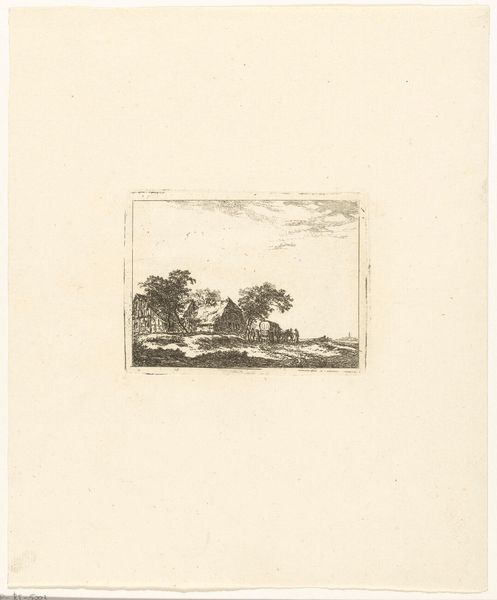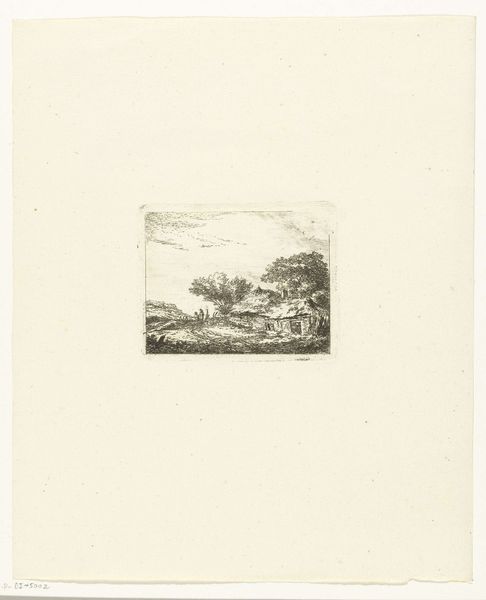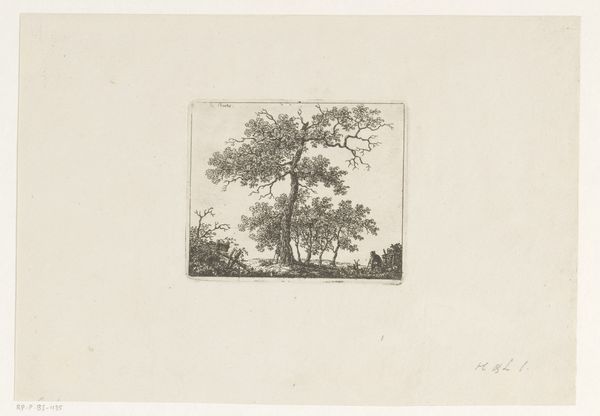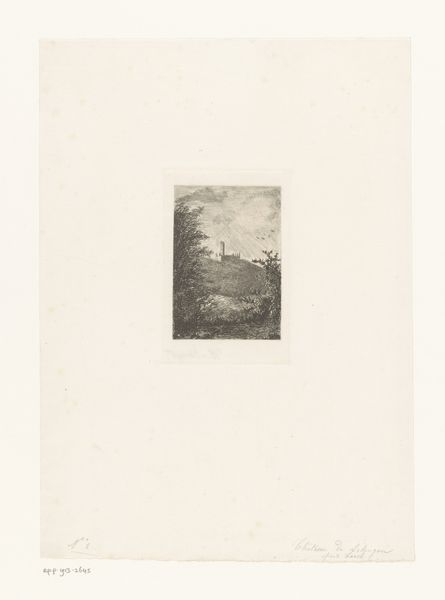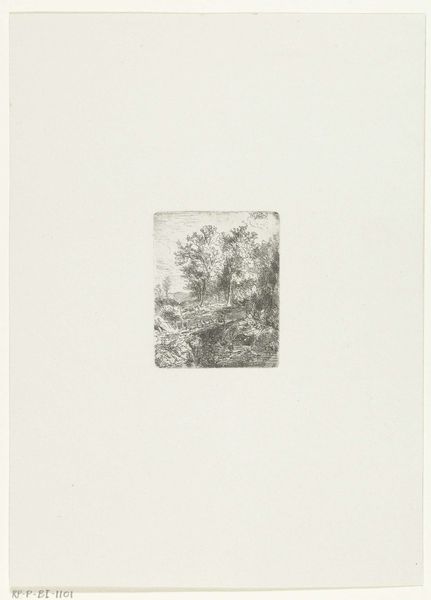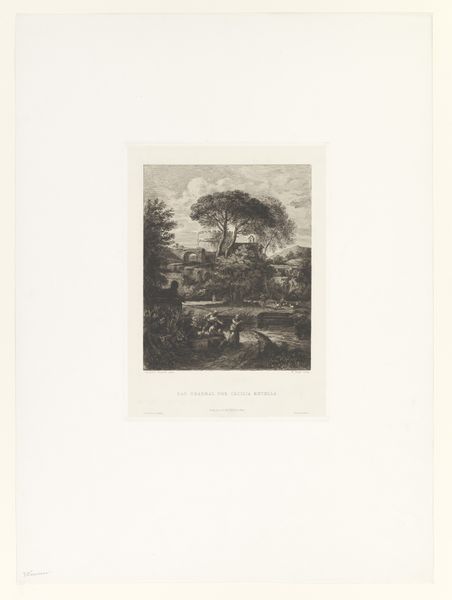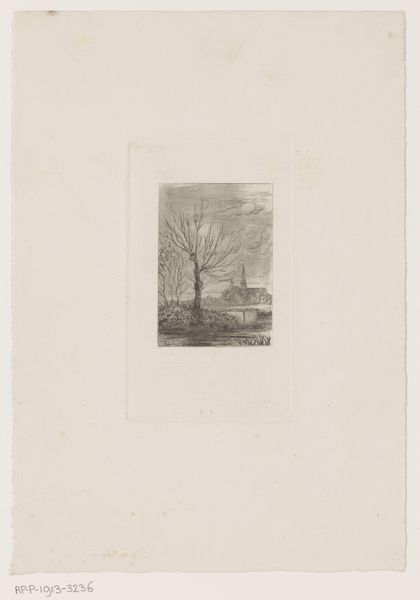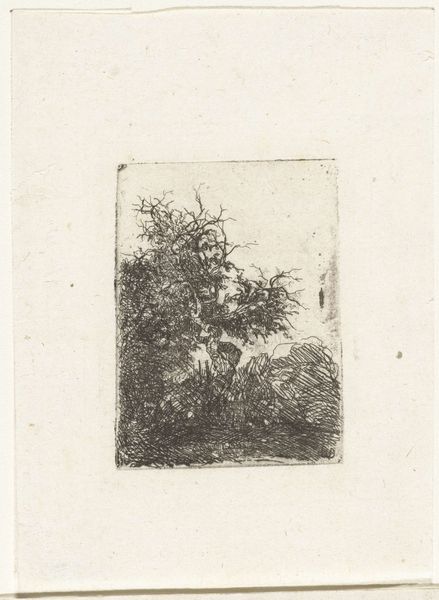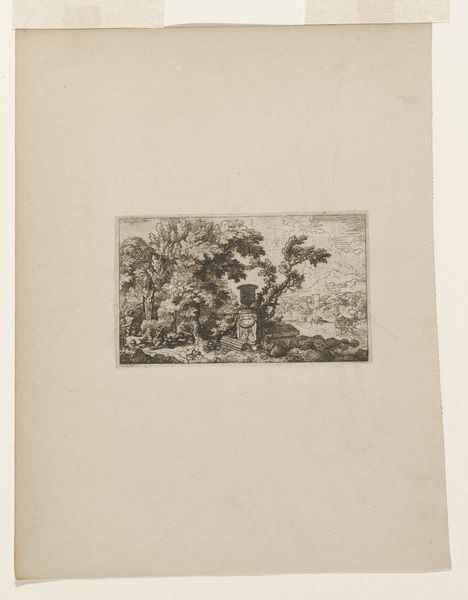
print, etching, paper
#
ink paper printed
# print
#
etching
#
old engraving style
#
landscape
#
paper
#
romanticism
#
pen-ink sketch
Dimensions: height 86 mm, width 110 mm
Copyright: Rijks Museum: Open Domain
Curator: What strikes you first about this print, before 1815, called "Landschap met rustende wandelaar" by Hermanus van Brussel? It's an etching on paper. Editor: The mood it creates is rather somber. The lines are so delicate, yet the landscape feels heavy, weighed down by the solitary figure. I am instantly intrigued by the narrative it suggests about humans and their relationship with land in the 19th century. Curator: I see that. And it’s important to remember the print medium. Think of how prints circulated ideas, reaching wider audiences than paintings. Van Brussel uses landscape, a popular genre, but imbues it with… what do you see there in terms of gender or class? This solitary wanderer...who is he? And what relationship to the land does his image create? Editor: The act of etching itself is critical. It's labor intensive, requiring skill and patience. Consider too the cost of paper at the time and its social distribution! This isn't just about aesthetic appreciation. It's about production, the very physical making and sharing of the image that determines who had access to this kind of artistic engagement, to imagine themselves within such landscapes or to claim this kind of artistry. What social class is implicitly encouraged here as the subject of art? Curator: I agree completely about production. This artwork can be seen through the lens of emerging bourgeois values in the early 19th century. The wanderer signifies a new kind of relationship with nature, an escape for the middle classes but not for everyone. Editor: Precisely, who exactly *can* wander, right? I keep returning to that stark black ink on paper and this artistic gesture implies. How many impressions could one make from a plate, and what communities would access these images? What choices dictated the circulation of a work like this, for example versus the large, romantic painting also so popular then. Curator: Seeing how the scale and relative affordability shapes its reach broadens my sense of who might have found respite or perhaps something far more complicated reflected in the solitary traveler. Thanks to your lens on materials and making. Editor: And your reading around the cultural role reminds me that a seemingly quiet image like this can reflect immense, if quiet, social shifts.
Comments
No comments
Be the first to comment and join the conversation on the ultimate creative platform.


